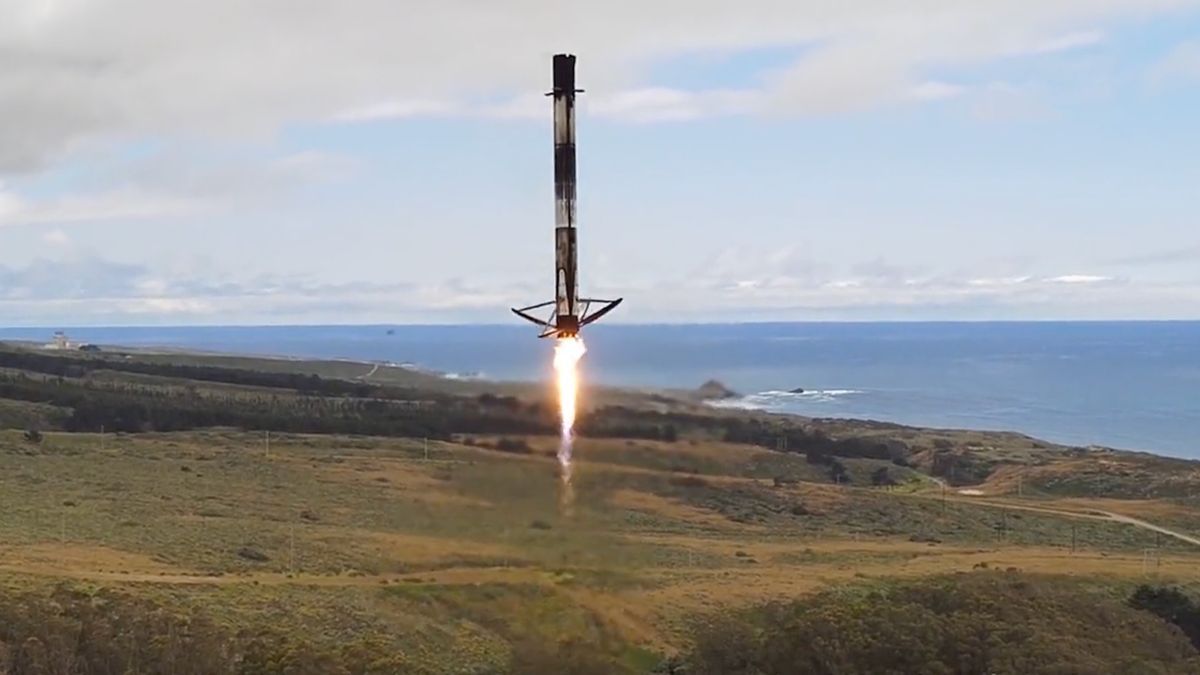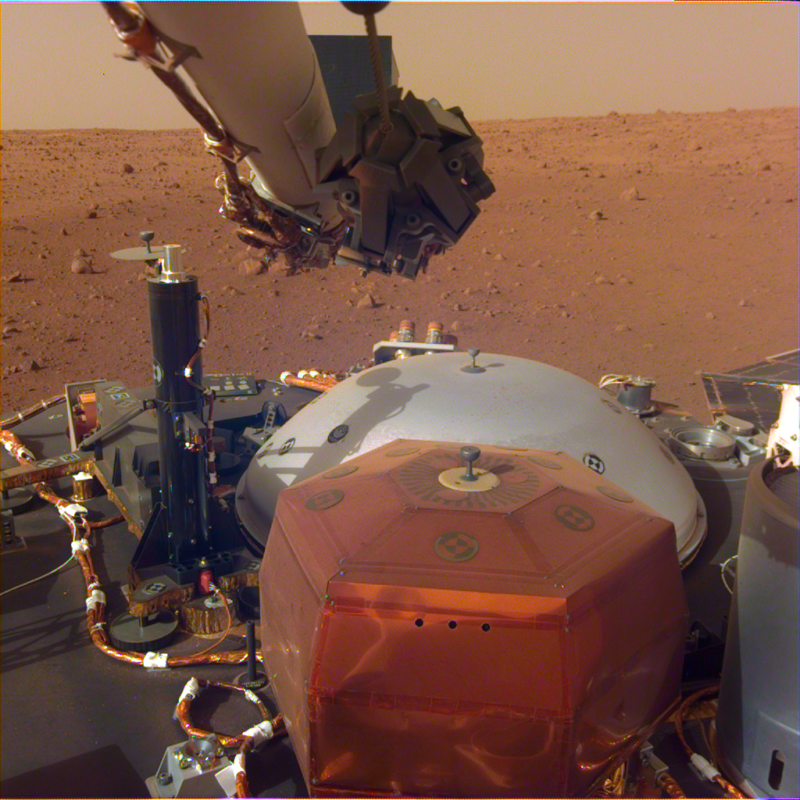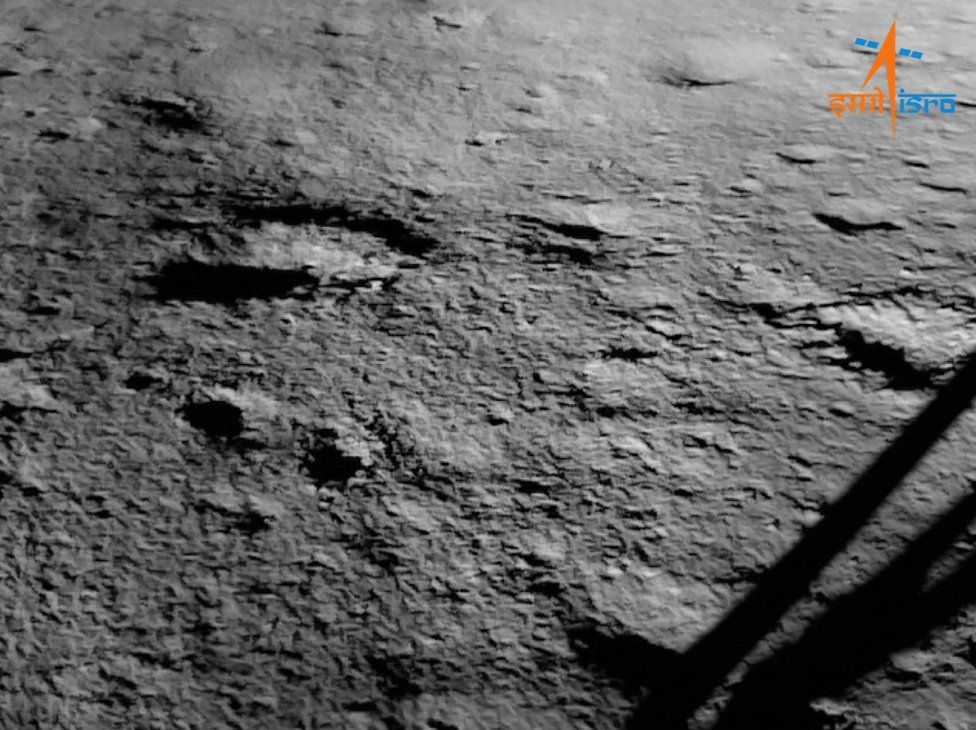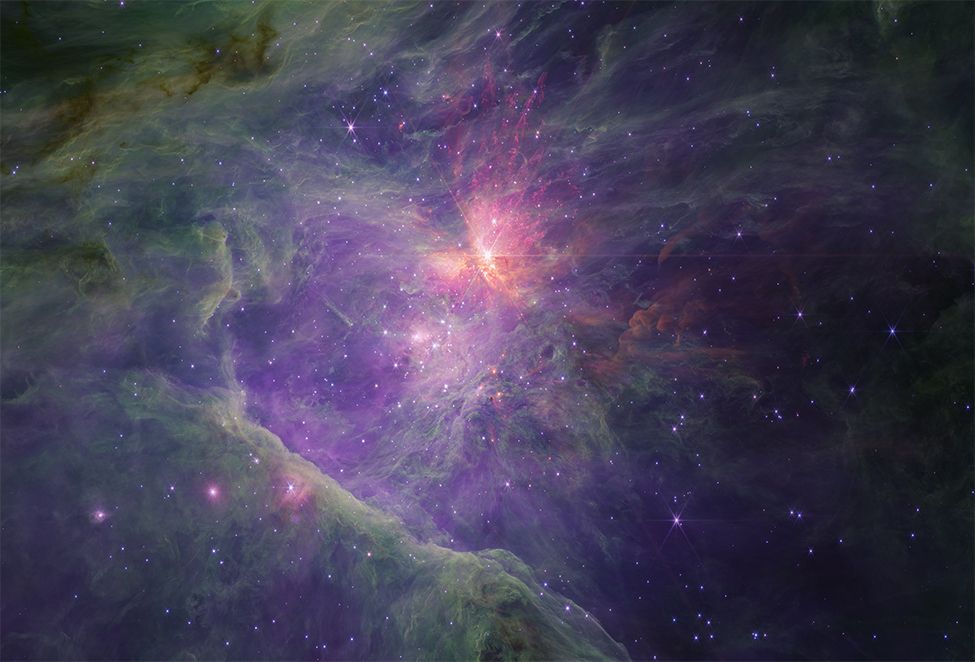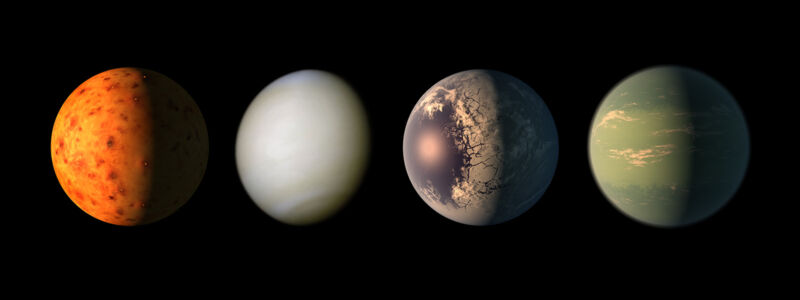I'm not saying it's aliens but...
Enlarge / Surveying the atmospheres of planets beyond the solar system, such as those in the TRAPPIST-1 system (artist’s concept of four of the system’s seven planets shown), could turn up interesting molecules that might indicate life. But ruling out false positives will be a challenge.
In June, astronomers reported a disappointing discovery: The James Webb Space Telescope failed to find a thick atmosphere around the rocky planet TRAPPIST-1 C, an exoplanet in one of the most tantalizing planetary systems in the search for alien life.
The finding follows similar news regarding neighboring planet TRAPPIST-1 B, another planet in the TRAPPIST-1 system. Its dim, red star hosts seven rocky worlds, a few of which are in the habitable zone—at a distance from their star at which liquid water could exist on their surfaces and otherworldly life might thrive.
What it would take to detect that life, if it exists, isn’t a new question. But thanks to the JWST, it’s finally becoming a practical one. In the next few years, the telescope could glimpse the atmospheres of several promising planets orbiting distant stars. Hidden away in the chemistry of those atmospheres may be the first hints of life beyond our solar system. This presents a sticky problem: What qualifies as a true chemical signature of life?
“You’re trying to take very little information about a planet and make a conclusion that is potentially quite profound—changing our view of the whole universe,” says planetary scientist Joshua Krissansen-Totton of the University of Washington.
To detect such a biosignature, scientists must find clever ways to work with the limited information they can glean by observing exoplanets.
